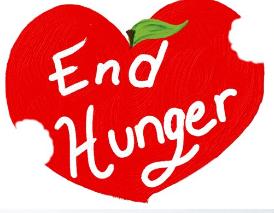







|
|
|
HOME LINKS |
|
RABISLIST.COM-ONE STOP SHOP-LIST FOR ALL YOUR NEEDS |
|
PLEASE CALL- 732-281-7122 / 732-423-8052 [USA] |
|
|
|
END HUNGER |
|
End hunger, achieve food security and improved nutrition and promote sustainable agriculture.
Some potential approaches to addressing these issues include increasing access to food, improving agricultural productivity, strengthening social safety nets, promoting sustainable agriculture, reducing food waste, and addressing the root causes of hunger.
By 2030, end hunger and ensure access by all people, in particular the poor and people in vulnerable situations, including infants, to safe, nutritious and sufficient food all year round. |
|
Responsible Consumption and Production |
|
Sustainable consumption and production is about promoting resource and energy efficiency, sustainable infrastructure, and providing access to basic services, green and decent jobs and a better quality of life for all.
Through AI-driven supply chain optimization, waste management, sustainable product design, and consumer education, AI plays a pivotal role in promoting responsible consumption patterns. Furthermore, AI's contributions extend to energy efficiency, sustainable agriculture, e-waste management, and the circular economy
|
|
|
|
|
|
|
|
Sufficient and healthy foods should be made available to everyone |
|
SDG 2 is to: "End hunger, achieve food security and improved nutrition, and promote sustainable agriculture."Indicators for this goal are for example the prevalence of diet, prevalence of severe food insecurity, and prevalence of stunting among children under five years of age. |
|
SDG 2 has eight targets and 14 indicators to measure progress.[20] The five outcome targets are: ending hunger and improving access to food; ending all forms of malnutrition; agricultural productivity; sustainable food production systems and resilient agricultural practices; and genetic diversity of seeds, cultivated plants and farmed and domesticated animals; investments, research and technology. The three means of implementation targets include: addressing trade restrictions and distortions in world agricultural markets and food commodity markets and their derivatives. |
|
SDG 3 is to: "Ensure healthy lives and promote well-being for all at all ages." Important indicators here are life expectancy as well as child and maternal mortality. Further indicators are for example deaths from road traffic injuries, prevalence of current tobacco use, and suicide mortality rate |
|
|
|
This section is an excerpt from Sustainable Development Goal 3. |
|
SDG 3 has 13 targets and 28 indicators to measure progress toward targets. The first nine targets are outcome targets: |
|
|
|
reducing maternal mortality |
|
ending all preventable deaths under five years of age |
|
fighting communicable diseases |
|
reducing mortality from non-communicable diseases and promoting mental health |
|
preventing and treating substance abuse |
|
reducing road injuries and deaths |
|
granting universal access to sexual and reproductive care, family planning and education |
|
achieving universal health coverage |
|
reducing illnesses and deaths from hazardous chemicals and pollution. |
|
implementing the WHO Framework Convention on Tobacco Control |
|
supporting research, development, and universal access to affordable vaccines and medicines |
|
increasing health financing and support the health workforce in developing countries |
|
improving early warning systems for global health risks. |
|
Goal 12: Responsible consumption and production |
|
SDG 12 is to: "Ensure sustainable consumption and production patterns." One of the indicators is the number of national policy instruments to promote sustainable consumption and production patterns.[28]: 14 Another one is global fossil fuel subsidies. An increase in domestic recycling and a reduced reliance on the global plastic waste trade are other actions that might help meet the goal |
|
|
|
This section is an excerpt from Sustainable Development Goal 12 |
|
Sustainable Development Goal 12 has 11 targets. The first 8 are outcome targets, which are: implement the 10‑Year Framework of Programs on Sustainable Consumption and Production Patterns; achieve the sustainable management and efficient use of natural resources; reducing by half the per capita global food waste at the retail and consumer levels and the reduction of food losses along production and supply chains, including post-harvest losses; achieving the environmentally sound management of chemicals and all wastes throughout their life cycle; reducing waste generation through prevention, reduction, recycling and reuse; encourage companies to adopt sustainable practices; promote public procurement practices that are sustainable; and ensure that people everywhere have the relevant information and awareness for sustainable development. The three means of implementation targets[53] are: support developing countries to strengthen their scientific and technological capacity; develop and implement tools to monitor sustainable development impacts; and remove market distortions, like fossil fuel subsidies, that encourage wasteful consumption. |
|
Responsible Consumption and Production |
|
Sustainable consumption and production is about promoting resource and energy efficiency, sustainable infrastructure, and providing access to basic services, green and decent jobs and a better quality of life for all.
Through AI-driven supply chain optimization, waste management, sustainable product design, and consumer education, AI plays a pivotal role in promoting responsible consumption patterns. Furthermore, AI's contributions extend to energy efficiency, sustainable agriculture, e-waste management, and the circular economy
|
|
|
|
HEALTH |
|
HEALTH IS WEALTH
"Good Health and Well-being"
To ensure healthy lives and promote well-being for all at all ages. The targets of SDG 3 focus on various aspects of healthy life and healthy lifestyle.
Goal
reducing maternal mortality ending all preventable deaths under five years of age fighting communicable diseases reducing mortality from non-communicable diseases and promoting mental health preventing and treating substance abuse reducing road injuries and deaths granting universal access to sexual and reproductive care, family planning and education achieving universal health coverage reducing illnesses and deaths from hazardous chemicals and pollution. The four means of implementation targets[3] are:
Implementing the WHO Framework Convention on Tobacco Control supporting research, development, and universal access to affordable vaccines and medicines
increasing health financing and support the health workforce in developing countries improving early warning systems for global health risks
SDG 3 aims to achieve universal health coverage and equitable access of healthcare services to all men and women. It proposes to end the preventable death of newborns, infants and children under five (child mortality) and end epidemics
Good health is essential to sustainable development and the 2030 Agenda. It focuses on broader economic and social inequalities, urbanization, climate crisis, and the continuing burden of HIV and other infectious diseases, while not forgetting emerging challenges such as non-communicable diseases.
Considering the global pandemic of COVID-19, there is a need to give significant attention to the realization of good health and well-being on a global scale.
Progress has been made in increasing life expectancy and reducing some of the common causes of child and maternal mortality.
Between 2000 and 2016, the worldwide under-five mortality rate decreased by 47 percent (from 78 deaths per 1,000 live births to 41 deaths per 1,000 live births).
Still, the number of children dying under age five is very high: 5.6 million in 2016 |

